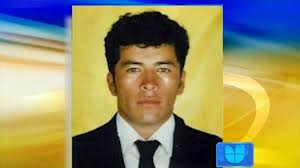Written by Ellie K.
Heriberto Lazcano, feared leader of one of the most brutal drug cartels in Mexico, met his demise on Oct. 7, in a shootout with Mexican marines. After being correctly identified and held in a local funeral parlor, however, the body was stolen during a raid by a group of armed men, displaying the power of the Zetas cartel.

Only 130 miles from the Texan border, marines were responding to the presence of an armed group in Progreso, a small town in Coahuila, when a firefight ensued after the suspected men pelted the marines with grenades from a moving truck. The shootout did not begin, however, until the marines attempted to search the apparently abandoned vehicle. Two men were killed in the altercation, with the Mexican navy identifying the more prominent casualty as Lazcano.
Ironically, Lazcano originally joined an elite, airborne unit within the Mexican armed forces in 1991, targeting drug cartels. This was shortly lived, however, as he and several other members of the military deserted and were recruited by the Gulf cartel in hopes of creating an enforcement arm, called Los Zetas. Since then, the Zetas have evolved into their own major drug trafficking ring, smuggling millions in cocaine and other drugs across the U.S. border yearly and engaging in extreme violence within the northeastern states of Coahuila, Nuevo Leon, and Tamaulipas. Headquartered directly across the border from Laredo, Texas, the cartel is currently the largest in the country in terms of territory, claiming operations in 11 Mexican states.Despite an offensive launched nearly six years ago by President Felipe Calderon, drug cartels still run rampant throughout the country, killing more than 50,000 civilians in drug-related violence during the crackdown alone. Such acts of violence include a casino fire, a mass murder of 72 migrants, and nearly 50 mutilated bodies hanging from bridges, all of which can be tied to the Zetas. Nicknamed “the Executioner,” Lazcano coordinated many of these atrocities. Wanted for $5 million in the United States and $2.3 million in Mexico, he has been described by Calderon as “one of the most important and most dangerous” criminals sought after in the country.

Will Grant, an analyst for the BBC News, also adds, “Many Mexicans think the Calderon administration would be wise not to trumpet this episode too loudly. While the removal of one of the key figures in Mexico’s drug war is unquestionably important, the brazen nature with which Los Zetas could simply step in and take back his body illustrates the extent of their power in states like Coahuila.”
Furthermore, bloody turf wars have broken out throughout the country, as the Gulf, Sinaloa and Zetas cartels clash over key smuggling routes in northern and central Mexico. The northeastern region, the Zetas’ strongest territory, has been most notably affected. Heightened violence has also occurred within the Zetas as the cartel supposedly splits. While some authorities report that Lazcano transferred control of the cartel to Miguel Angel Trevino Morales due to ailing health, others believe the cartel simply divided into two different factions on its own. Either way, Morales remains at large and holds a reputation for even greater violence than Lazcano. As journalist Anabel Hernandez said, “Even though the head falls, there is immediately a substitute.”
Additionally, Lazcano and his cronies are not the first military men gone rogue in South America. On Oct. 8, Colombian militia boss Hector German Buitrago, otherwise known as “Martin Llanos,” confessed his role in 1997’s brutal massacre of the Mapiripán people. Throughout the attack, an unknown number of civilians were murdered, beheaded, dismembered, and disemboweled before being thrown into a nearby river by the United Self-Defense Forces of Colombia. Although this paramilitary, right-wing organization has now been outlawed, militia massacres were not uncommon as such groups attempted to eradicate any suspected supporters of other left-wing assemblies, using similar tactics as those involved with gang violence. Unfortunately, this shows that corruption and violence extend far beyond the cartel wars and borders of Mexico.































